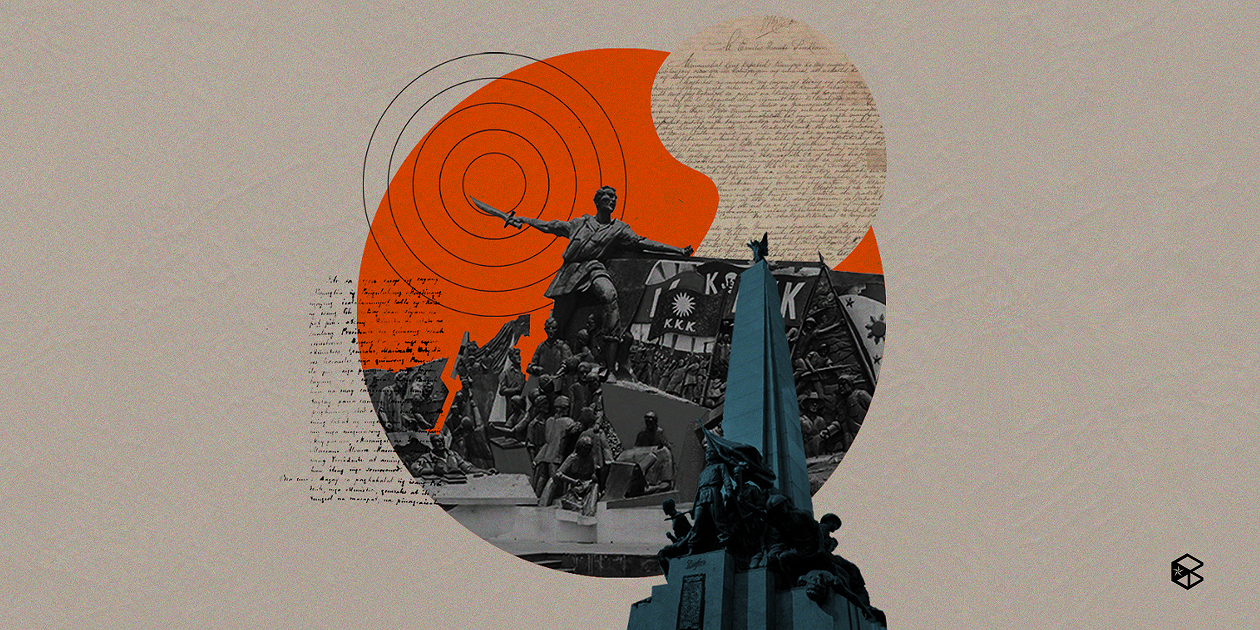In line with the celebration of Bonifacio Day, Filipinos look back on the Supremo's ideals to launch a revolutionary government in search of true freedom and independence, and the mysteries behind his intriguing dispute with first Philippine President Emilio Aguinaldo.
Who is Supremo Andres Bonifacio?
On July 7, 1892, Andres Bonifacio led the foundation of the secret revolutionary movement Kataas-taasang, Kagalang-galangang Katipunan ng mga Anak ng Bayan (KKK), also known as “Katipunan,” spearheaded the uprising against the Spanish colonizers and laid the groundwork for the first Philippine Republic.
In 1895, Bonifacio became one of the chief Katipunan officers and emerged as the Supreme leader or “Supremo.”
By the year 1896, Katipunan had an estimated 100,000 members and branches not only in Manila but also in other parts of the country. Its members were mostly workers and peasants. The movement eventually became the most prominent revolutionary force that Spaniards faced.
Bonifacio vs. Aguinaldo, country’s most intriguing strife
Andres Bonifacio and Emilio Aguinaldo’s rivalry was the country’s most intriguing strife, loaded with secrets and deception.
According to the Malacañan Palace’s Presidential Museum and Library, on March 22, 1897, a convention was held in Tejeros in order to settle the dispute between the two councils, the Magdalo and Magdiwang, and to decide on what type of government should be installed. Aguinaldo won, while Bonifacio came in second after votes were counted to decide who will be the president after the overthrow of the Spanish colonizers. Meanwhile, according to the National Historical Commission of the Philippines, Bonifacio rejected the result saying the voting had been rigged and became a rebel leader within a revolutionary government.
A day later, Bonifacio emphasized in a letter “Acta de Tejeros” that the Tejeros convention was deemed invalid after he was insulted by Daniel Tirona, a Magdalo member and war director contender, through stating Bonifacio’s lack of credentials to have a seat in the government. Tirona suggests for the election of a lawyer named Jose del Rosario to replace Bonifacio as the Director of the Interior, as according to Tirona, the position requires for the appointed person to have a lawyer diploma. The “Acta de Tejeros” letter proclaimed the events at the assembly to be disorderly and tarnished by dishonesty. Signatories to this petition rejected the republic instituted at Tejeros and affirmed their steadfast devotion to the Katipunan’s ideals.
Moreover, according to Katipunan: Documents and Studies, in a meeting in Naic, Cavite in April 1897, Bonifacio and his men authored the “Acta de Naik” wherein they resolved to establish a government independent from the established revolutionary government in Tejeros.
Then, Bonifacio, along with his family and men, left Naic for Indang, a place in Cavite where food was scarce and people were tightfisted. However, while on his way, Aguinaldo sent men to arrest him. Bonifacio resisted the arrest and thus resulted in him becoming wounded in the process.
He faced a trial for acts that are harmful to the existence of the new government and was given the death sentence by a military tribunal but was reduced to indefinite exile.
Meanwhile, the Philippine News Agency reported that on May 10, 1987, Bonifacio along with his brother Procopio Bonifacio was killed by Katipuneros and not by the Spaniards.
In an article published by Esquire Magazine titled “The Untold Story of Andres Bonifacio’s Execution,” there are two versions told by Lazaro Makapagal, who was behind the execution of the Bonifacio brothers that was ordered by Aguinaldo, to how Bonifacio brothers were executed on May 10, 1897.
The first account was that Makapagal turned away before ordering his men to shoot Bonifacio brothers, while the other version was that Procopio was shot first and Andres tried to run away and that makapagal had to chase and gum him down. According to the Inquirer, the bodies of the Bonifacio brothers were never found. Regardless of the truth on how Bonifacio died, one thing is clear in Philippine history that the father of Philippine revolution was killed under the order of the first Philippine President.
24 years after Bonifacio’s death, Republic Act No. 2946 was enacted declaring Nov. 30 as a national holiday in remembrance of the birth of Bonifacio.
According to the Philippine News Agency, unlike other national heroes of the country such as Dr. Jose Rizal, Bonifacio is remembered on his birth rather than the date of his death, May 10, 1897, because he died in the hands of his fellow Filipinos and not killed by foreign colonizers.


